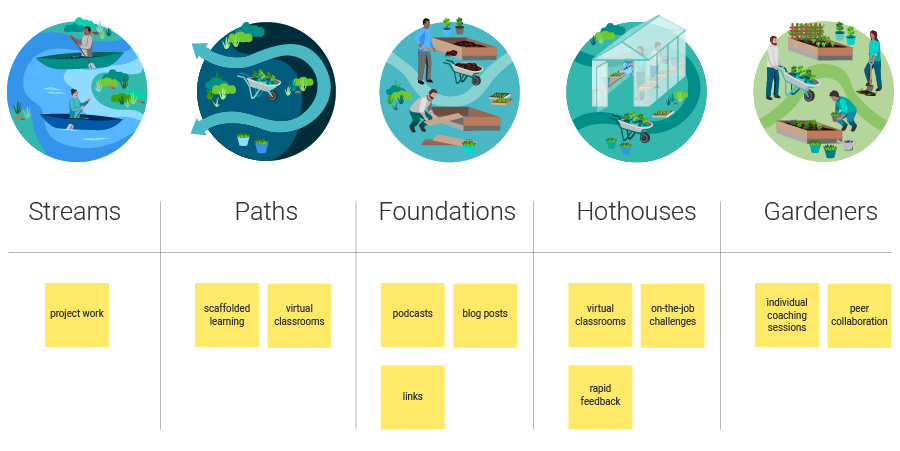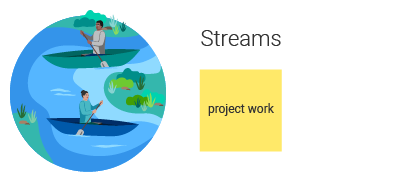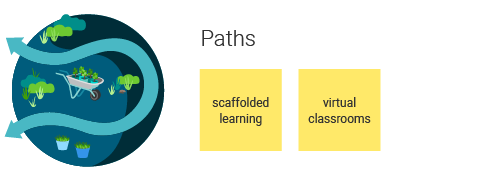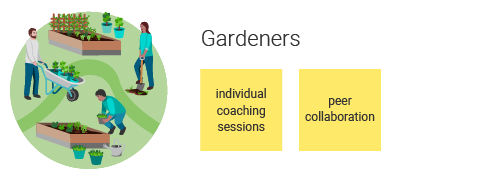70:20:10 learning ecosystem approaches in action

You might be wondering why an eLearning company hasn’t developed a series of self paced modules for people to learn how to design eLearning. We haven’t because we know it’s not going to work. Designing high-impact eLearning is a ‘Renaissance skill’. It takes a complex mixture of instructional design, visual communication design and media design which can’t be learned by doing a series of eLearning modules. It needs a more sophisticated approach to achieve the complex learning that is required. The programs’ learning design is based on the 70:20:10 learning model.
The 70:20:10 model is a great way of explaining how learning really works and is a powerful mindset but it's not actually a framework for designing learning. One approach to using the 70:20:10 model for learning design is using an ecosystem approach of connected components working together.
Generally a learning ecosystem approach can be used in two ways:
- As a strategic framework for design learning across an organisation
As a framework for blended program design
In our capability development programs the focus is on using a learning ecosystem as the framework for designing blended learning.
Learning ecosystems and Sprout Labs’ digital learning capability development programs
Our digital learning capability development programs are designed using a Sprout Labs learning ecosystem model. The core learning experience is project based. During the programs there are weekly virtual classroom sessions plus one-on-one coaching time every fortnight.
Streams
At the core of this program is project work that the participants are working on. The projects are where the learning really happens and people are applying new approaches and practices. Learning doesn’t just happen with the doing, it happens when you reflect on what you’re doing and when you make your own generalisations. In the program there is a subtle way we accelerate the reflective process; there is a moment in each virtual classroom session where the group checks its shared progress and what they recently learned. It’s an opportunity to track projects and trigger reflection.
Paths
At the core of Sprout Labs’ learning ecosystem is pathways. One of the issues with experiential learning and more self-directed learning is that learners are often left to ‘sink or swim'. The idea of pathways in our programs is the participants are given direction and a structure for their project. The issue with project based learning is that it’s often an add-on e.g. you do the workshop and the follow up activity is a workplace project. Learners can struggle with this approach as it's not scaffolded and supported. In the eLearning Superhuman program the structure of the program is organised around the steps to do your project. The Visual Design program is less focused on working on a single project and instead gives a structure to explore what the most important aspects of visual design for learning are, with an expert and peers.
Foundations
A well designed learning ecosystem ensures learners have access to a range of job aids and support resources. These become the foundations of the learning ecosystem. In our programs for each topic there are resources including podcasts, blogs posts and links.
This means less of the virtual classroom sessions are spent on content and they can be highly interactive.
The importance of this learning ecosystem principle is that the virtual classrooms are not the only way to gain access to the content. The knowledge foundations can be accessed beyond virtual classrooms.
Hothouses
In a learning ecosystem, formal learning experiences are organised around interactive ‘hothouses’ where learners are provided with somewhere to practise the decision making they do on the job and gain rapid feedback. This can be the missing element in project based learning. Often in project based learning, participants don’t have opportunities to practice new skills. The virtual classroom sessions in our programs are built around challenges and activities which the group solves. One of my favourite activities is to take a highly technical piece of text and rewrite it as an effective text for learning. In the Visual Design program part of the sessions are spent working on challenges in Adobe Illustrator.
Gardeners
Learning ecosystems are not just about resources. The driving force behind a learning ecosystem is the people involved and how they learn from each other.
In our programs there a few layers of people learning and working together. The groups are small, so there is lots of interaction while the group is working on challenges and sharing progress on projects.
There are fortnightly coaching sessions with the facilitator which is time to work one-on-one in your projects and challenges.
It would be good to have more peer collaboration in between the virtual classroom sessions. There are discussion boards in the LMS being used to support the programs which are active in the first couple weeks, then projects take over and what is called the ‘hierarchy of presence’ switches in. The ‘hierarchy of presence’ is something I’ve seen and experienced in many blended learning programs. Virtual classrooms have more presence and it's easier and faster to talk than write on a discussion board. If you have face-to-face sessions in your blend they are more present and become the dominant format.
If you want to know more about Sprout Labs’ capability development programs please check out the events section of our site.




